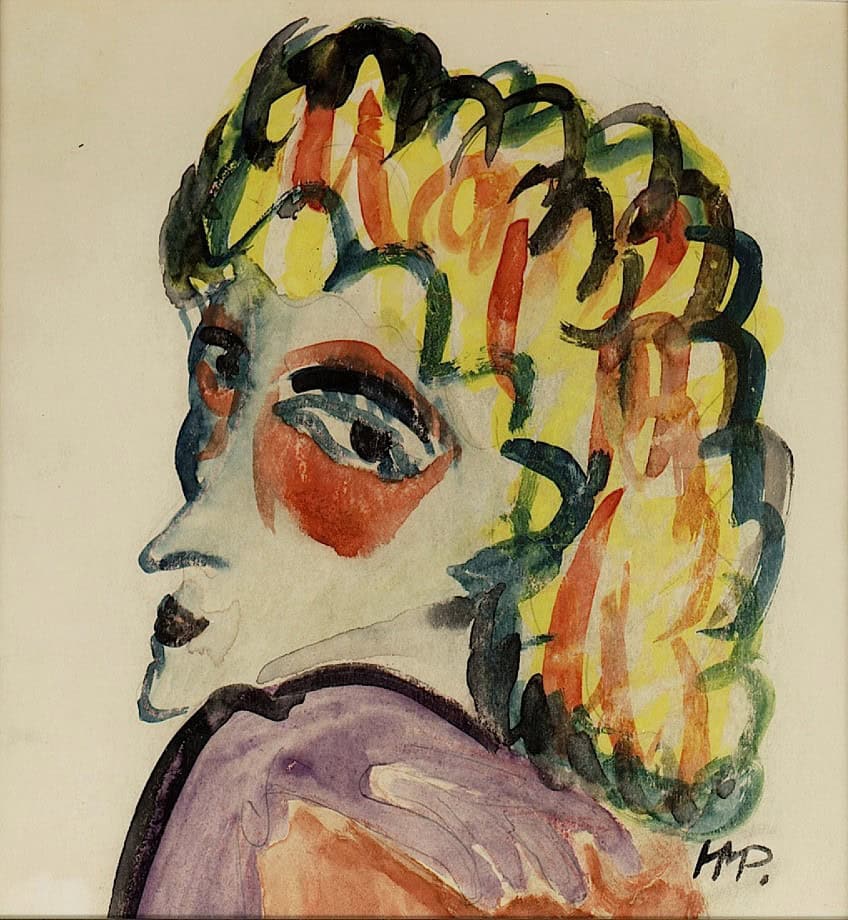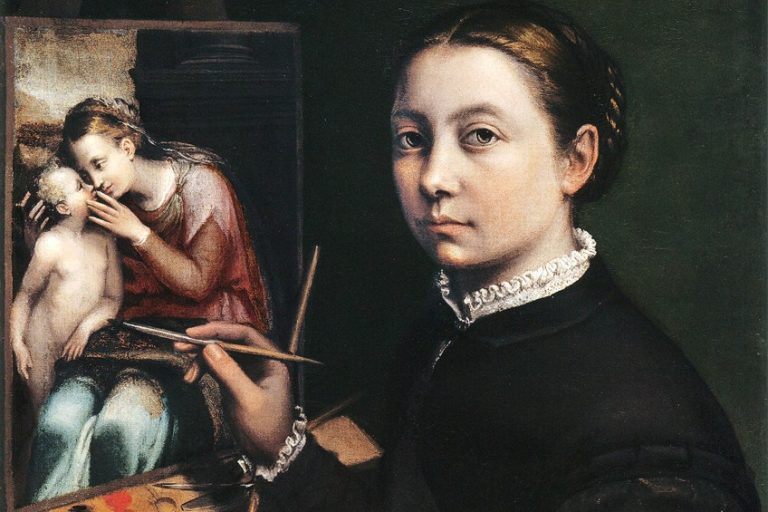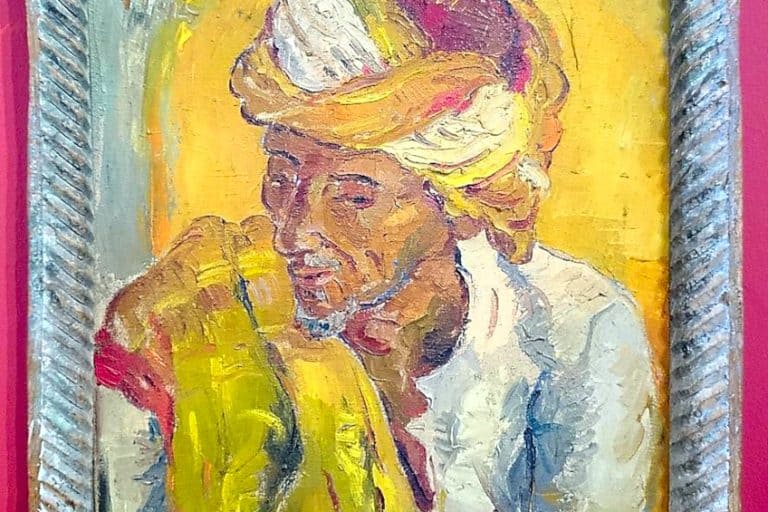Max Pechstein – Exploring the Bold Colors of Die Brücke
Max Pechstein was a key figure in the German Expressionist movement, known for his vibrant use of color and dynamic compositions. A member of the influential Die Brücke group, Pechstein played a crucial role in shaping the aesthetic of early 20th-century modern art. His work often depicted bold, emotional scenes, inspired by both the urban environment of Berlin and his travels to more remote and exotic locations, such as the South Pacific. Pechstein’s art reflects a deep interest in the human condition, emphasizing raw emotion and a connection to nature, which set him apart as a significant contributor to modern art in Germany.
Key Takeaways
- Pechstein was a key member of the Die Brücke group.
- His art was marked by bold colors and primitivist styles.
- He faced persecution under the Nazi regime but regained recognition after WWII.
Early Life and Artistic Beginnings
| Birth | December 31, 1881 |
|---|---|
| Death | August 29, 1955 |
| Place of Birth | Zwickau, German Empire |
| Genre of Work | Painting and graphic art |
Max Pechstein was a pivotal figure in German Expressionism, known for his vibrant and emotive paintings. A member of the influential Die Brücke group, he played a crucial role in the early 20th-century art movement that sought to break away from traditional aesthetics.
Pechstein’s works are renowned for their bold colors and primitivist styles, reflecting his deep engagement with both Fauvism and non-Western art influences.
Born on December 31, 1881, in Zwickau, Pechstein’s early life and artistic beginnings were marked by his commitment to exploring new forms of expression. He created a broad range of works from nudes to landscapes, frequently utilizing woodcuts and prints. Unfortunately, his journey was marred by political turbulence. World War I and the Nazi regime’s persecution heavily impacted his career, with his art being labeled as “degenerate.” Nevertheless, he managed to reclaim his position in the art world post-World War II.

Pechstein’s legacy is not only in his colorful and emotionally charged artworks, but also in his enduring influence on modern art. His membership in the Die Brücke group and his approach to expression through bold hues and raw lines have inspired generations of artists. Pechstein remains a testament to the power of art to transcend adversity and political oppression.
Involvement With Die Brücke Group
Pechstein’s involvement with the Die Brücke group marked a significant phase in his early career. This association began after he moved to Dresden to attend the Royal Art Academy. It was here that he encountered Otto Gussman, a notable figure who played a pivotal role in his development.
Through these academic connections, Pechstein was introduced to the founding members of Die Brücke, a group dedicated to revolutionary ideas in art.
His participation helped him gain exposure and refine his style, characterized by bold colors and expressive forms. Although he later pursued an independent path, his work during this period remains integral to understanding his evolution as an artist.
Zwickau and Dresden Influences
Pechstein’s upbringing in Zwickau, a working-class town, deeply influenced his art. The son of Hermann Franz Pechstein, who labored in a textile factory, Max was exposed to the modest yet industrious life of his family. His early fascination with Vincent van Gogh further fueled his passion for vibrant, emotional artwork.

In Dresden, Pechstein enrolled in the School of Applied Arts before advancing to the Royal Art Academy. The rigorous training he received, combined with mentorship from figures like Otto Gussman, honed his technical skills and artistic vision. The blend of his working-class roots and formal education was crucial in shaping his distinctive expressionist style.
Pivotal Career Periods
Max Pechstein’s career underwent significant transformations influenced by various art movements and historical events. Key phases include his involvement in the Berlin Secession movements, the tumult of World War I, and the challenges posed by the Nazi regime.
Berlin Secession and New Secession Movements
Pechstein initially gained fame through the Berlin Secession, an avant-garde movement that rejected academic art norms. In 1910, disagreements with the Berlin Academy led him and other artists to form the New Secession. This group aimed at promoting modern art and gained notoriety for its exhibitions featuring bold and innovative works. Pechstein’s association with these movements allowed him to experiment with vibrant colors and dynamic compositions.
His work during this period reflected a break from tradition, focusing on emotional intensity and modernist techniques.
Expressionism to Degenerate Art
As a member of the Die Brücke group, Pechstein played a crucial role in the Expressionist movement. His work featured vivid palettes and emotional depth, aligning with the group’s ethos of conveying raw human experiences. However, the Nazi regime’s rise to power in the 1930s brought significant challenges.

Labeled as “Degenerate Art” (Entartete Kunst), his works were removed from museums and banned. The Nazis deemed his style and subject matter as contrary to their ideology. This period saw Pechstein struggling against state censorship and maintaining his artistic integrity amid oppression.
From World Wars to Teaching Position
World War I interrupted Pechstein’s career, but he resumed work post-war and joined the November Group, which advocated for socialist politics in art. His post-war art displayed a shift towards softer colors and balanced compositions.
In the 1920s, Pechstein received a teaching position at the Prussian Academy of Arts.
Despite the honor, his career faced another setback during World War II due to the Nazi regime’s crackdown on modern artists. After the war, Pechstein continued teaching and influencing younger generations until his death, helping to shape the future of German art.
Artistic Style and Influences
Max Pechstein’s artistic style evolved through a variety of influences, ranging from the primitive art he encountered on his travels to his association with contemporary art movements and fellow artists.
Primitivism and the Influence of Travel
Pechstein’s style noticeably reflected primitivism, influenced by his travels to Palau and the Western Front. These journeys exposed him to non-Western art forms, and his resulting works exhibited thick contour lines and vivid color palettes, emulating the raw and unrefined aesthetics he admired.

His fascination with primitive cultures led him to use bold brushstrokes and contrasts, distancing his work from traditional Western art norms. This influence is evident in his paintings that showcase simplified human forms and natural landscapes.
Collaborations and Contemporaries
Pechstein was a significant member of Die Brücke, a German Expressionist group that included notable artists like Erich Heckel. His interaction with the group was crucial for his creative growth, as they collectively sought to break away from academic art conventions.
Significant influences included Vincent van Gogh and the Fauves like Henri Matisse, whose bold use of color and emotional depth resonated with him.
His exposure to their works during trips to Paris in 1907 left a lasting impact, reflected in his vivid palettes and expressive subjects. By collaborating with his contemporaries and drawing from diverse sources, Pechstein’s art bridged the gap between primitive influences and the modernist tendencies of his time.
Legacy and Impact
Max Pechstein had an enduring influence on 20th-century art, characterized by his vivid palette and expressionist style. His works are prominently featured in esteemed public collections and have garnered significant attention in both exhibitions and auctions.
Public Collections and Major Exhibitions
Max Pechstein’s art is housed in several prestigious institutions. The Brücke-Museum in Berlin holds a comprehensive collection of his works, reflecting his pivotal role in the Die Brücke group. The Museum of Modern Art (MoMA) in New York also showcases his expressionist pieces, emphasizing his global influence.

During his lifetime and posthumously, Pechstein exhibited in significant venues. His exhibitions in Germany were disrupted when his art was labeled as Degenerate Art by the Nazis. Despite this, interest in his work has persisted. Major exhibitions have been hosted by institutions like the Currier Museum and the Detroit Institute of Arts.
Market Success and Notable Sales
Max Pechstein’s art also commands impressive prices in the art market. Notable sales include his painting Yellow Mask,” which was sold for £1.9 million at a Sotheby’s auction. Another significant sale was Woman’s Head, fetching $1.37 million, affirming his market success. His market value shows strong appreciation for his contribution to expressionism. This market recognition underlines Pechstein’s lasting impact, suggesting that collectors and institutions alike hold his work in high regard.
Max Pechstein’s legacy as a pioneering Expressionist artist is marked by his fearless exploration of color, form, and emotion. His contributions to the Die Brücke movement helped define a new era of modern art in Germany, characterized by its intensity and directness. Despite facing political persecution during the Nazi regime, Pechstein’s commitment to his artistic vision remained unwavering. His work continues to resonate today, celebrated for its vivid portrayal of the human experience and its influence on the evolution of 20th-century art. Pechstein’s art serves as a powerful testament to the enduring impact of Expressionism on the global art landscape.
Frequently Asked Questions
What Artistic Movement Is Max Pechstein Associated With?
Max Pechstein is associated with the German Expressionist movement. He was a member of the Die Brücke group, which played a crucial role in the development of Expressionism.
How Did Max Pechstein Contribute to the Development of Expressionism?
Pechstein brought formal academic training to Die Brücke, contrasting with the group’s largely architectural background. His work in printmaking, producing over nine hundred prints between 1905 and 1950, showcased his dedication to the movement.
What Are Some of the Most Notable Artworks Created by Max Pechstein?
Notable artworks by Pechstein include Dancer in the Mirror (1923) and Young Woman with Red Fan. His early fame and membership in the Prussian Art Academy further cemented his standing in the art world.
How Did World War I Impact Max Pechstein’s Artistic Style and Subject Matter?
World War I profoundly affected Pechstein’s art. He served on the Western Front, and the war’s toll influenced his themes, shifting to darker and more somber subjects. His classification as a degenerate artist by the Nazis further impacted his career and artistic output.
Isabella studied at the University of Cape Town in South Africa and graduated with a Bachelor of Arts majoring in English Literature & Language and Psychology. Throughout her undergraduate years, she took Art History as an additional subject and absolutely loved it. Building on from her art history knowledge that began in high school, art has always been a particular area of fascination for her. From learning about artworks previously unknown to her, or sharpening her existing understanding of specific works, the ability to continue learning within this interesting sphere excites her greatly.
Her focal points of interest in art history encompass profiling specific artists and art movements, as it is these areas where she is able to really dig deep into the rich narrative of the art world. Additionally, she particularly enjoys exploring the different artistic styles of the 20th century, as well as the important impact that female artists have had on the development of art history.
Learn more about Isabella Meyer and the Art in Context Team.
Cite this Article
Isabella, Meyer, “Max Pechstein – Exploring the Bold Colors of Die Brücke.” Art in Context. September 29, 2024. URL: https://artincontext.org/max-pechstein/
Meyer, I. (2024, 29 September). Max Pechstein – Exploring the Bold Colors of Die Brücke. Art in Context. https://artincontext.org/max-pechstein/
Meyer, Isabella. “Max Pechstein – Exploring the Bold Colors of Die Brücke.” Art in Context, September 29, 2024. https://artincontext.org/max-pechstein/.











